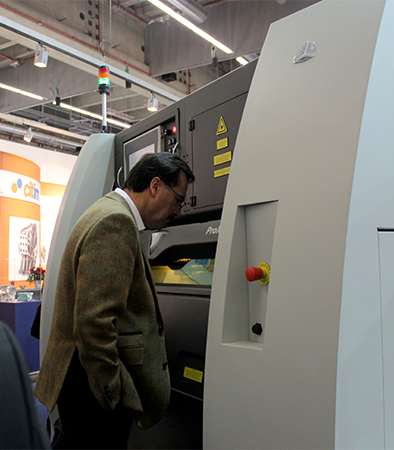by Adam Turner, Engineering Program Manager, 3D Systems

After spending the week at EuroMold, the Super Bowl of the 3D printing industry, the potential for the technology has never been more evident. 3D Systems launched six new printers in addition to a number of revolutionary new materials, which unsurprisingly attracted a lot of existing and new customers to the booth. I was fortunate enough to speak with hundreds over the course of the week, and all of them inspired me to continue working to develop game-changing machines.
One question that continued to surface, albeit in a joking manner, was “When will your printers be able to print themselves?” This topic comes up from time to time amongst the nerds in the office (myself included), but I hadn’t given it real thought until now. Although the 3D printing industry is built upon changing the way the world views manufacturing, prototyping and the overall creative process, very few of the current components in these amazing machines are printed parts. Yet, with the introduction of new multi-color, multi-material and high strength-capable systems, however, we may be closer than we think to having our printers print themselves. After all, our systems are already producing fully functional end-use parts, and our materials selection is growing to include a variety of metals and durable plastics. (Above: A Euromold attendee inspects the ProX™ 300 metal 3D printer.)
I spent an afternoon at Euromold roaming the halls of the machinery (CNC, EDM, etc.) and molding halls. These traditional manufacturing industries are not sitting idle while 3D printing creeps into their space—their systems are evolving into highly efficient, intelligently automated, and even more cost-effective solutions. As things currently are, additive manufacturing relies on subtractive manufacturing to build 3D printing systems. As ironic as that may seem, the reality is that competition is good for everyone, and it is evident now more than ever.
Are we crazy if we think we can change the world? Most of us like to believe it’s possible, but few of us are fortunate enough to work in industries where that is our daily mission. Creating a printer that could print itself would certainly be a start.